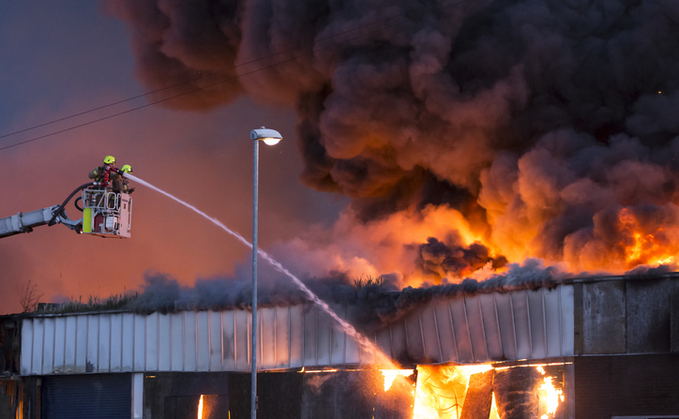
Leaving firefighting behind: How full-stack observability can help technologists look beyond the pressure of digital transformation
James Harvey, executive CTO, EMEAR at Cisco AppDynamics, explores how full-stack observability can help free technologists from the pressures of IT firefighting and embrace a more sustainable approach to managing their IT stack
For the vast majority of IT departments, the last two years have been incredibly challenging. Technologists have been at the forefront of their organisations' response to the pandemic, delivering rapid innovation to meet customer needs and enable workforces to suddenly switch to remote working. Throughout the pandemic, IT teams have played a defining role in guiding organisations' digital transformations and helping them to weather business disruption.
But, even now, almost two years on, many teams find themselves in the same position - under relentless, and even intensifying, pressure to drive innovation at pace and provide faultless digital experiences to their business and their customers. Here, I will explore how full-stack observability can help free technologists from the pressures of IT firefighting and embrace a more sustainable approach to managing their IT stack.
The fast rate of transformation is not the cause for concern; most IT professionals have relished the growing responsibilities they have assumed during this period and embraced the chance to transform their businesses for the better. In fact, according to our latest Agents of Transformation: The Rise of Full-Stack Observability report, 75 per cent believe this is a defining moment of their careers and a chance to shine.
The main problem lies in many technologists' incomplete toolkit. Often teams simply don't possess the right tools needed to deal with the spiralling IT complexity emerging from rapid digital transformation efforts. Without the visibility they need to monitor performance across the entire IT estate, they can't cut through the data noise to prioritise the areas that matter most.
The result? Constant firefighting in the IT department, with technologists having to identify and respond to IT issues after they have arisen, constantly on the back foot. This poses a growing risk to organisations, which are under pressure to deliver outstanding digital services: 91 per cent of technologists emphasised the need to prioritise activity according to business outcomes over taking reactionary measures.
Taking this into account, here are three tips for technologists to free themselves from the vicious cycle of firefighting and embrace a more effective and sustainable approach to managing their IT estate:
Obtain visibility across your entire IT stack
The first step towards moving beyond firefighting is freeing up time. Our research found that 68 per cent of technologists invest significant resources and waste a lot of time determining where IT performance issues are actually happening.
This is why IT teams need visibility of performance data across the entire IT estate: from traditional, legacy IT systems through to new hybrid cloud environments. With the current shift towards cloud computing, it's vital to ensure technologists have visibility into applications and underlying infrastructure for large, managed Kubernetes environments running on public clouds.
With the right tools to monitor the full IT stack, from customer-facing applications down to core network and infrastructure, IT departments can massively reduce the amount of time it takes to identify the root causes of issues, understand dependencies and fix these issues before they impact end users. That will free up time to think about other strategic initiatives as well as drive innovation and increase the speed of delivery.
2. Apply a business lens to IT data
Getting visibility across the IT stack ensures far more complete and accurate data on the performance of IT operations. It also means IT teams will be faced with a potentially overwhelming quantity of data they need to analyse and make sense of.
Full-stack observability combined with real-time business outcomes, such as sales transactions, revenue and customer experience, helps technologists cut through excessive data noise and identify the most important data points to their business. By doing so, organisations will be able to better prioritise their resources and dedicate investment to the most important facets of their businesses.
IT teams across all industries have rapidly come to appreciate the benefits of full-stack observability, with 96 per cent of technologists already believing that linking technical performance to business metrics is crucial to achieving their innovation goals.
When technology performance data is linked with business metrics, it's a genuine game-changer. Users can take a more proactive approach to IT performance management, making informed decisions based on real-time business impact. Having a business lens also helps validate that the spend on technology is delivering the right business outcome.
3. Embrace the potential of AI and automation
As business leaders place a growing focus on nurturing innovation and developing new digital services that can differentiate them from their competitors, it is inevitable that the amount of data they produce will grow exponentially.
The responsibility will rest on IT teams to streamline and optimise an ever-growing IT estate. However, even with current observability solutions, this increasing complexity may soon outpace technologists' capacity to keep up. This raises the possibility that businesses may once again be forced back into firefighting mode.
Organisations should consider the potential of automation and AI to help businesses automatically manage IT performance. AI-enabled observability solutions will enable IT teams to identify issues and address anomalies in real time before they even begin to impact customers and the business. All this can be done without the need for manual intervention.
This will allow organisations to always provide flawless technology performance, whilst moving away from perpetual firefighting and building a proactive approach to digital transformation.
James Harvey is executive CTO, EMEAR at Cisco AppDynamics





















